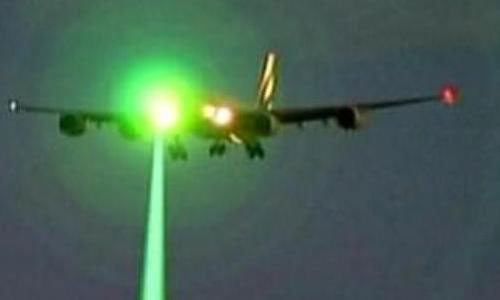Laser Attacks On The Rise
Posted by flysynergy on Apr 12, 2012 in Flight Safety, GA News | Comments Off on Laser Attacks On The Rise With Liverpool John Lennon airport alone reporting 93 incidents in the last 12 months, the shining of lasers into the flight decks of aircraft on final approach is alarmingly on the increase.
With Liverpool John Lennon airport alone reporting 93 incidents in the last 12 months, the shining of lasers into the flight decks of aircraft on final approach is alarmingly on the increase.
Schemes have been redoubled in an attempt to catch the offenders which have been warned by the police to expect the full force of the law as a result of endangering passengers lives. With the offence being illegal in the UK since 2010, there have already been several successful prosecutions - for which the maximum possible sentence is 5 years imprisonment.
One of the main contributory factors to the increase is the low cost and wide availability of the lasers, available from as little £8 and easily obtainable in shops or online.
A spokesman from BALPA (British Airline Pilots Association) said:
"Pilots can easily be temporarily blinded by laser attacks. Being blinded or dazzled by these incredibly bright lasers puts everyone's life on board that aircraft at risk. People who do this maliciously are playing Russian roulette with people's lives.
The police are taking this matter more and more seriously, but we would like to see custodial sentences being the norm.
A longer term way of dealing with this problem is by having stronger regulation over the sale, import and licensing of strong laser devices which BALPA supports."
If subject to a laser attack, flight crews are to report the incident to ATC and also file an MOR (Mandatory Occurrence Report) after flight. The CAA has also released a self-assessment tool for flight crew to determine the likelihood of having sustained eye damage following a laser attack.
The Aviation Laser Exposure Self-Assessment (ALESA) card is available online from the CAA.
